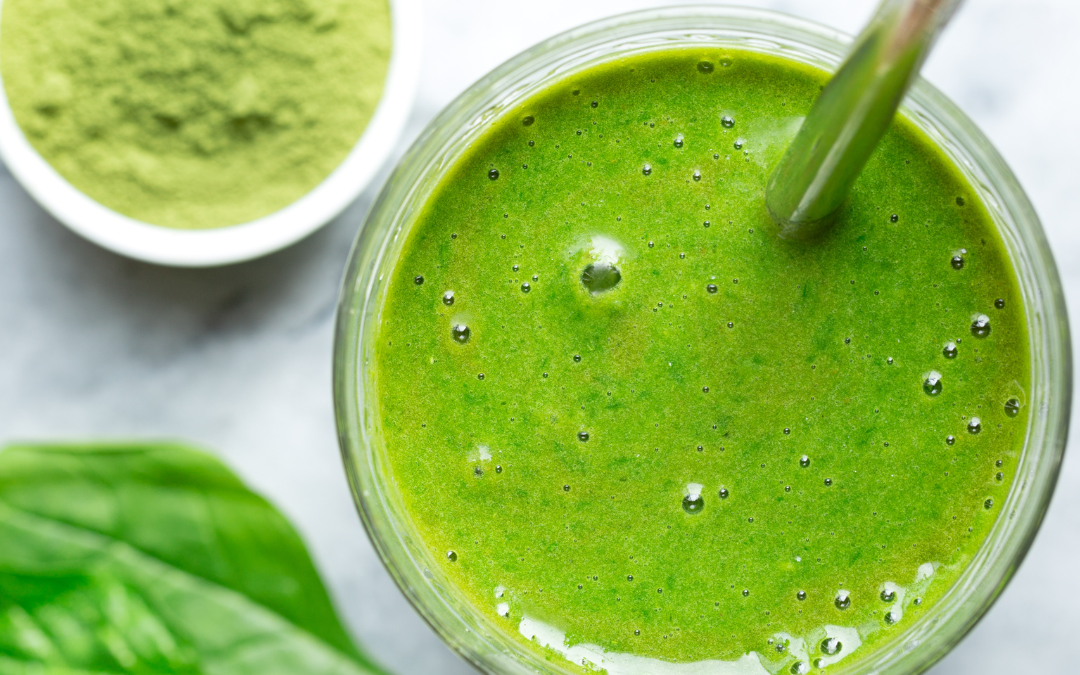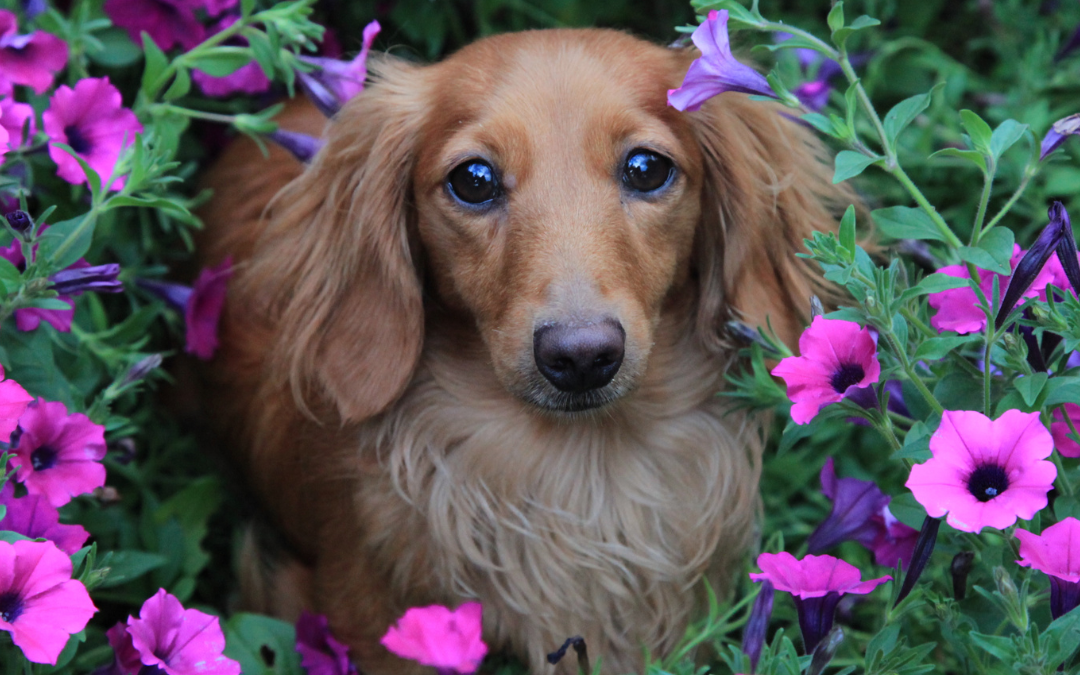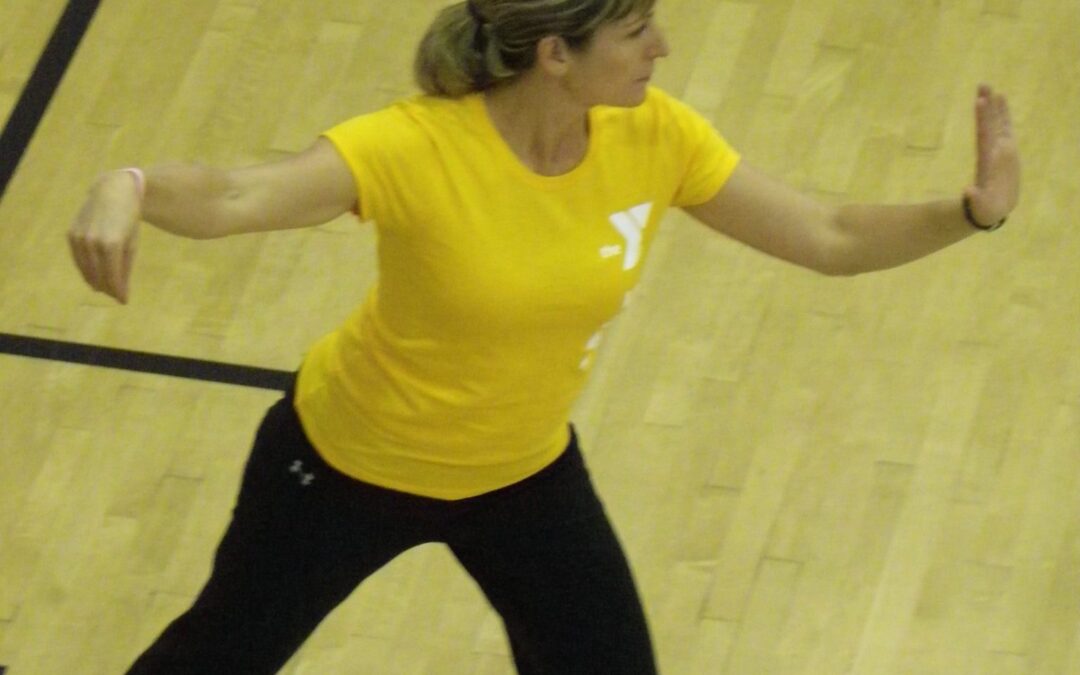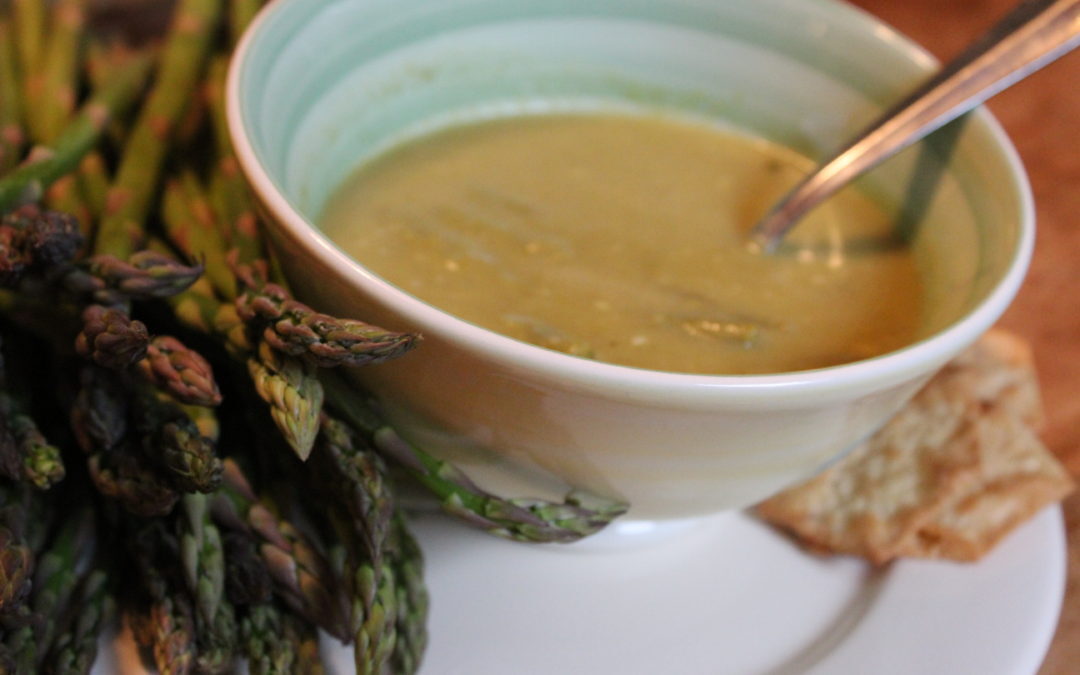
by Guest | Apr 18, 2024 | Eat Well, Featured, Lunch & Snack Recipes, Uncategorized

by Guest | Apr 18, 2024 | Being Well, Featured, Uncategorized, Work Well
What is your first memory of being stressed or upset? What was it about? Is it something that would upset you now, all these years later? Maybe, or maybe not. For me, it’s the time my brother knocked over my Lincoln Log house because he wanted one of the pieces I was using (though he would probably tell you a different story).
We all face challenges—even kids. Dare I say, especially kids, as they are still developing the understanding and skills to navigate their world and interactions with others. We as humans are not born with executive function, or the complex ability to think about future consequences, regulate our emotions and impulses, or organize tasks. These are all things that we learn from the environment around us. Most people would probably recognize early interactions and relationships as things that help form a child’s executive function. And they would be correct! The “serve and return” back-and-forth exchange of communication with caregivers is a necessary component in a child’s ability to feel secure in the world and to know how to operate within it. Their executive function allows them to process new anxieties, building resilience. When a child is resilient, the inevitable challenges of life aren’t quite as hard to manage.
So, you’re raising a child. You’re doing all the right things: the bedtime stories, the tummy time, the peek-a-boo. Your child is on the superhighway to mastering executive function! What else could possibly be done? Well, have you checked for lead in your home?
Like, the lead pipe from the board game Clue? The lead that infiltrated the water supply in Flint, Michigan in 2014? Yeah, that lead. You probably already know that lead is bad, but do you know why? Lead is a common and exceptionally potent neurotoxin that accumulates in bones and soft tissue. It damages the brain and central nervous system. In high enough doses, it can cause coma, convulsions, or death. Even in non-fatal cases of lead poisoning, children can be left with permanent brain damage: reduced IQ, reduced attention span, and increased antisocial behavior. In other words, lead can interfere with a child’s development of executive function.
There is no “safe” level of lead exposure, and young children are particularly vulnerable. As a child plays and crawls on the floor, any lead dust or particles on the ground get on their hands. And, as is a child’s nature, those hands go in their mouth. That easily, the dust of the lead paint on the walls is now in the child’s system. This is compounded by the fact that children’s bodies are far less efficient than adult bodies at filtering out lead.
The good news is that lead poisoning is preventable. You can easily find out if an item has lead in it with a home lead testing kit ordered online. Be aware of common sources of lead in the home. Lead-glazed ceramics, water pipes, imported spices and cosmetics, and children’s toys are all common places lead has been found. About 24% of homes and buildings built before 1978 have lead paint. (Note: DO NOT try to sand or scrape off lead paint! This will release more lead dust into the air and can be extremely harmful. If you have lead paint and want to make your home safer, paint over the existing paint and be mindful to clean up any chipping or flaking.) Some jobs and hobbies can also come with lead exposure. Demolition work, manufacturing, renovation, welding, casting or soldering (fishing weights, bullets, stained glass) can all leave lead dust on clothing that is later tracked into the home. To avoid this, leave shoes and work clothes outdoors, wash them, and take a shower before going about your home life. Creating a physically safe environment for your child, one that is absent of lead and other dangers, gives them the capacity to focus on developing as resilient young humans.
Whew! Lead averted. Now that that’s out of the way, we can go back to focusing on the bedtime stories and peek-a-boo…almost.
Lead isn’t the only household toxin. Other common sources of accidental poisonings in children are household cleaning products, personal care/cosmetic products, and analgesics (pain relievers). About 35,000 children go to the emergency room every year after getting into medications and vitamins left within their reach. Those gummy vitamins sure do look like candy, right? Imagine how tempting such a treat is to small hands. Protect your children from accidental poisoning; keep medications, vitamins, and cleaning products up, away, and out of reach. When possible, keep them locked. Never refer to medicine as “candy” to get your child to take it, and teach them to never eat something that wasn’t given to them by a trusted adult, even if it looks like candy.
Parents and caregivers: I know the list of everything you do for your kids is always growing, and it just grew a little more. Your hard work is recognized. All those veggies they don’t want to eat, the emotional guidance, late nights, and disputes over Lincoln Logs can be exhausting unlike anything else. But remember this: the environment you are creating, the support you provide, and your watchful eye are sculpting your child’s executive function, their whole health. And you’re doing an amazing job.
Written by: Sarah Ermer, MPH, CHES; Tillamook Family Counseling Center
Sources:
Centers for Disease Control and Prevention. (2021, October 29). Childhood Lead Poisoning
Prevention: Populations at Higher Risk. Retrieved from
www.cdc.gov/nceh/lead/prevention/populations.htm?CDC_AA_refVal=https%3A%2F%2F
www.cdc.gov%2Fnceh%2Flead%2Ftips.htm
Centers for Disease Control and Prevention. (2023, February 24). Early Brain Development.
Retrieved from www.cdc.gov/ncbddd/childdevelopment/early-brain-development.html
Centers for Disease Control and Prevention. (2022, May 17). Lead in Foods, Cosmetics,and Medicines. Retrieved from www.cdc.gov/nceh/lead/prevention/sources/foods-
cosmetics-medicines.htm
Centers for Disease Control and Prevention. (2022, February 2). Lead in Jobs, Hobbies, or
Other Activities. Retrieved from www.cdc.gov/nceh/lead/prevention/sources/jobs-
hobbies-activities.htm
World Health Organization. (2023, August 11). Lead poisoning. World Health
Organization.https://www.who.int/news-room/fact-sheets/detail/lead-poisoning-and-
health

by Guest | Apr 11, 2024 | Being Well, Featured, Move Well, Uncategorized
We love our pets. We also love our beautiful coastal gardens. Sadly, sometimes, the most stunning things in our gardens can be toxic to our beloved pets. So, how do we protect our pets and still maintain a gorgeous landscape. Depending on your pets’ needs and habits, we can eliminate many of the toxic plants they may come in contact with. Here are a few common plants to avoid.
First to consider is Narcissus (Daffodils). These pretty seasonal flowers brighten up an early spring garden. Many see them as a sign that wet stormy coastal weather is ending and warmer, drier days are upon us. However, even in small amounts, the flowers can cause symptoms of diarrhea and vomiting.
Many of us love rhubarb pie and the rhubarb plant grows well in coastal climates. The stalks produce malic acid which is beneficial for people with acne, fibromyalgia, dry skin, and fatigue. The leaves are a different story. Even in small amounts the leaves can be lethal. They can cause gastrointestinal distress, breathing problems, and internal bleeding.
The flowers from Digitalis (foxglove) contain cardiac glycosides used in modern medicine. Accidental ingestion can be fatal. Dizziness vomiting, irregular heartbeat, delirium, hallucinations, and death can occur if accidentally ingested.
Hemlock is another plant highly toxic to pets. The entire plant, especially the roots, are poisonous. They can be found growing wild along stream banks and ditches. Symptoms vary after ingestion, ranging from nausea, vomiting, and salivation to convulsions, coma and ultimately death.
Finally, Hedra (English Ivy) is a common culprit of poisoning. These evergreen woody vines are extremely invasive and can easily climb up trees, fences, and buildings. The berries of these plants look like blueberries but that is where the similarity ends. If eaten, they can cause burning in the mouth and throat and gastrointestinal distress.
Before discussing pet-safe plants there is one additional plant of concern. Locally, Creeping Buttercups grow prolifically. They are opportunistic and will grow anyway they can take root. Gone unaddressed they will completely take over a garden. It is important to take note of these especially because often they grow in lawns. Many domestic animals eat grass to aid in digestion. The fresh sap of this plant is highly irritating to skin and mucous membranes. If ingested it can cause gastrointestinal irritation, colic, diarrhea, nephritis and in severe cases, paralysis of the central nervous system. The best way to prevent the spread of these is to dig and pull them up by the roots before they go to seed.
Even though there are a number of plants of concern, not to worry, there are many plants and flowers that add beauty to a garden and maintain a safe environment for your pet. Consider planting a pet friendly lawn. You can purchase seeds from a variety of places that sell lawn seed advertised as pet safe and pet friendly. Careful research will help you decide which seed is right for your pet and the area where you live.
Also, there are many herbs that your pet might enjoy snacking on while they improve your landscape. Try planting herbs like sage, rosemary, thyme, dill, fennel or basil. They smell terrific, are a nice addition to dips and sauces, and your pets will also appreciate them.
Many annuals are colorful and safe for your pets. Among them are petunias, fuchsias, sunflowers, camellia, snapdragons, and nasturtiums. All these plants come in a variety of shades, shapes and colors. Because of our mild coastal temperatures, they often winter over, and we can enjoy them over again the next year.
There are also a variety of perennials that are equally gorgeous and pet friendly. They include dahlias, hollyhock, and black eyes susans. These will add the brilliance that makes every garden pop with color year after year.
There is much to consider when designing a pet friendly landscape. It is best to do thorough research before planting. There are a wide variety of choices to meet your and your pet’s needs. If you need help determining what is safe and unsafe for your garden, please feel free to contact your local OSU extension office at 503-842-3433 or contact us through our web site at https://extension.oregonstate.edu/tillamook
You can also contact the Tillamook County Master Gardeners Association for help. Reach them through the OSU extension office, their website at https://tillamookmastergardeners.com/ or find them on Facebook. There are many resources available to assist you in creating a beautiful and safe garden for you and your pet.
Written by: Alice St. Clare, OSU Master Gardener

by Guest | Apr 4, 2024 | Being Well, Featured, Move Well
In our busy lives, there is much to pull our focus and distract our minds as we move through our day. The constant buzz of the phone in our pocket, ever-present screens, and ambient noise from a world in constant motion contribute to all the distractions. All of these disturbances lead to inattention and are not ideal for our bodies or minds. This is where the concept of mindful movement can come into play. Using mindful movement helps to increase awareness of your body, which, in turn, will help increase the enjoyment of activities, improve mental focus, and reduce stress. This article will help you explore the benefits of mindful movement and simple methods of incorporating mindfulness into your daily life.
What is Mindful Movement?
Mindful movement is creating an awareness of your body by bringing your full attention to the present moment and the current activity you are engaging in. Mindful movement is done without the intent of judging yourself. Instead, you are acknowledging how the body feels and responds to movement. The difference between exercising and practicing mindful movement is intent. You can exercise by merely going through the motions of the movements with the hope of seeing physical benefits. However, with mindful movements, you notice things like your breathing, how the floor feels under your feet, and the stretch in your muscles as you move them.
Mindfulness originally started as a form of meditation. It became more mainstream as yoga gained popularity, and mindfulness was frequently added to the end of a yoga practice. Practicing mindful movement with exercise then expanded to other forms of exercise, including Pilates and stretching. However, mindful movement is not limited to just formal exercise. It can be incorporated into the things you mindlessly do every day, such as walking the dog or sitting at your desk while working.
The Benefits of Mindful Movement
As the practice of mindful movement grew, so did the research showing the benefits of moving mindfully.
- It is generally accepted that exercise reduces stress and improves emotional well-being. The practice of mindful movement is no exception. Mindful-based interventions show a reduction in anxiety, depression, and stress equivalent to psychological interventions.
- Reducing stressors has the additional benefit of improving immunity. Stress is known to suppress immunity by triggering an inflammatory response. By utilizing methods of reducing stress, you can experience boosted immunity by interrupting the inflammatory response pathways in your body.
- Routinely practicing mindful movement will help improve sleep. The average adult needs 7-8 hours of sleep a night. Mindful movement can help achieve this amount of sleep and improve the quality of the sleep you get.
- Improved focus, concentration, and control of ADHD symptoms have been observed in adults and children who routinely practice mindful exercise, such as tai chi, yoga, and dance.
- Proprioception is the body’s awareness of its place in the space around it and how it moves through space. Mindful movements will improve proprioception. This occurs by using the brain and body connection to retrain the body with new motor skills. These new skills help reduce falls by improving balance.
Examples of Mindful Movement
Mindful movement is for everyone, not just athletes and those who exercise regularly. Mindful movement can be incorporated into your daily activities with both structured and unstructured activities.
Structured:
- Yoga
- Pilates
- Strength training
- Stretching
- Tai Chi
- Qigong
Unstructured:
- Freestyle dance, turn the radio on and let loose
- Singing in the car
- Playing games with children
- Gardening
- Walking your dog
- Washing dishes
- Driving
Begin Moving Mindfully
You can start your practice of moving mindfully at any time and easily incorporate it into your daily routine. There is no need for athletic equipment. No level of activity is too small to add mindfulness to it. You can quickly begin with a walk, seated yoga, stretching, or by adding mindfulness to your current exercise routines. Here are some tips to get you going.
- Add to everyday activities: Focus on basic activities like walking, breathing, gardening, or gentle stretching.
- Minimize distractions: Turn off your phone for the duration of your mindfulness practice. Find a quiet space away from others where you can really focus your mind without interruption.
- Focus on breathing: Use your breath to regulate your mind. Slow, deep breaths help to slow your mind and keep you in the present moment.
- Engage your senses: Pay attention to the sounds around you. Can you smell wet rain on the ground or the fir tree in your yard? Reach out and touch trees, rocks, and flowers as you walk.
- Pay attention to your body: Acknowledge any aches or pains, but do not dwell on them. Notice how your hair moves as the wind blows through it, how the ground feels under your feet, or the movement of your muscles with the activity. If your mind wanders, gently bring your attention back to your body.
Starting small with activities you already do in your daily life makes it easy to add mindful movement gradually. Begin with activities you enjoy or that fit into your lifestyle. Taking the time to pay attention and focus on your movements allows you to gain a new appreciation for the amazing piece of machinery that your body is. By focusing on your body, you are doing more than simply going through the motions of an activity. So remember to be patient and kind to yourself by focusing on progression, not perfection.
Resources:
https://www.sciencedirect.com/science/article/abs/pii/S0272735817303847?via%3Dihub
https://davidvago.bwh.harvard.edu/why-mindfulness-can-help-the-immune-system/
https://pubmed.ncbi.nlm.nih.gov/26802824/
https://www.ncbi.nlm.nih.gov/pmc/articles/PMC4484342/
https://www.ncbi.nlm.nih.gov/pmc/articles/PMC4309156/
Written by Leanna Coy

by Michelle | Mar 23, 2024 | Being Well, Featured, Uncategorized, Work Well
Imagine yourself living and working in a space that only sparks joy. This is a goal of our Tillamook County Wellness initiative. It is also the philosophy behind decluttering, a proven approach for improving well-being. Popularized by Japanese organizing consultant, Marie Kondo, decluttering has become a winning strategy for identifying what truly matters in one’s life – keeping the things that spark joy and getting rid of what doesn’t.
Many of us are drawn to Spring cleaning. A time of renewal, Spring feels like the perfect window to get things in order and start with a fresh, clean slate. Decluttering isn’t just for our home environment; it is good for our workspaces too. As part of their Blue Zones well-being initiative, Adventist Health Tillamook is encouraging employees and leaders to declutter their workspaces. The process involves not just removing old, unwanted items but determining what brings value. As you can see by one team’s before and after photos, clearing clutter can transform the spaces in which we spend most of our day from stress-inducing chaos to calm, welcoming environments where people can cultivate a sense of purpose and meaning.
Whether it is our home or work environment, most of us have accumulated things we no longer need. I love reading. My home is filled with many, many partially read books. Kondo suggests that a half-read book is a book that gave you what you needed in the pages that were read. If the book sparked joy, you’d have finished reading it. So, rather than feeling obligated to finish reading every book, we can take heart that we were fulfilled from what we did read and pass that book along for someone else to enjoy.
Kondo says, “People cannot change their habits without first changing their way of thinking.” When we get stuck thinking a certain way, it can get in the way of what we really need. Taking time to deliberately ask if something is serving us is helpful when it clears the debris to make way for what is most meaningful. Disorder is not only visually unpleasant but it can create a kind of mental disorder where we find it difficult to prioritize, plan and stay focused. The little bit of energy it takes to declutter can free up a lot of energy for what really matters.
The process of getting rid of things can also help us identify patterns that are not serving us. I have a lot of shoes; a lot of clothing, in general. If I’m being honest, much of what I own no longer fits me and there aren’t enough days in the year to wear it all even if it did. When we are collecting and holding on to things, it’s a good idea to ask ourselves why it is so important for us to hold onto them? There is often a deeper insight into this. As a child, I wore hand-me-downs and always felt like a fashion flop. I wanted to fit in and have the latest styles like the popular kids. This mindset has carried over into my adult life. Is it serving me now – and did it serve me as a child? No. Being objectively curious about what is behind our habits can be a springboard to improving our mental well-being. As Kondo so wisely states, “When we really delve into the reasons for why we can’t let something go, there are only two: an attachment to the past or a fear for the future.” This is why people like Steve Jobs wear the same clothes every day. Not having to sift through the closet each morning, frees up their mind for more creative pursuits
Decluttering isn’t just about “stuff.” It can be about getting rid of apps on our phone, emails in our inbox, and relationships that drain us. Kondo gives the following advice. “When you come across something that you cannot part with, think carefully about its true purpose in your life.” You may be surprised to realize how much of what you have already served its purpose. “By acknowledging their contribution and letting them go with gratitude, you will be able to truly put the things you own, and your life, in order,” says Kondo.
It can feel overwhelming to tackle cleaning out the attic, garage, or, in my case, the bedroom closet. Breaking it down into smaller tasks can help. For proven tips and tricks, check out Marie Kondo’s book, The Life-Changing Magic of Tidying Up, or any other of her books, which you can also check out from your local library branch. You can also watch “Tidying Up with Marie Kondo” on Netflix.
What will you declutter this Spring? I’ll be tackling my closet!
Written by Michelle Jenck, M.Ed., Tillamook County Wellness Coordinator, Certified Behavior Change Coach

by Guest | Mar 14, 2024 | Eat Well, Featured, Recipes
It’s Spring – Time for Asparagus
By Laura Swanson
Every vegetable has its season, and for me, a favorite is “asparagus” season – when the first early Spring crops arrive and the price per pound drops. There are so many ways to prepare asparagus – classic steamed; drizzled with olive oil and balsamic vinegar and roast with garlic of course; and pickled. Yes, pickled asparagus spears – oh, yum!
One of our family traditions is to prepare “Spring Asparagus Soup” for St. Patrick’s Day on March 17th. It’s perfect for our Irish heritage (my mom’s maiden name was Fitzpatrick) to have green soup and corned beef. This is a quick and easy soup to prepare, low in calories and asparagus is such a nutrient rich vegetable.
Asparagus is a young tender shoot (spear) vegetable, which emerges from its underground root system. Their use as food was well recognized by the ancient Greeks and Romans as a prized delicacy. One of the oldest recorded vegetables, its thought to have originated along the coastal regions of eastern Mediterranean and Asia Minor regions. Botanically, it is a herbaceous perennial plant (meaning it will come back year after year with a little attention and maintenance) belonging to the Asparagaceae family. It is closely related to the Liliaceae plants which also include onion, garlic, tulip, daffodil, etc – all the heralds of Spring. Plant asparagus crowns in early spring, and once established, this plant can provide an abundance of healthy spears after a couple years. Young scaly edible spears emerge from the underground extensive matted root systems, which can be ready for harvest in early Spring in some areas, usually by late Spring here on the Oregon Coast. When I see my asparagus making an appearance in the garden, that’s when I know it’s Spring.
Asparagus is a very low-calorie vegetable. 1 cup (134 g) fresh spears carry just 40 calories. Fresh asparagus is a good source of dietary fiber, Vitamins A, C, E and K, as well as the B vitamins. Asparagus is an excellent source of minerals, copper, iron,. calcium, potassium, manganese, and phosphorus.
This soup is so easy to prepare, elegant and very nourishing. And if Spring had a flavor or taste – it’s Asparagus soup! Serve it for your Easter dinner, and when it’s spring asparagus season – stock up! The soup freezes well, too. You can use vegetable stock and then it is vegan/vegetarian and is also gluten-free.
SPRING ASPARAGUS SOUP
- 2 1/2 lbs. asparagus
- 3 T. butter
- 1/2 C. minced onion
- 4-6 cloves of garlic, minced
- 1/2 t. ground coriander
- 4-6 C. chicken or vegetable stock
- Salt and White Pepper
1. Steam asparagus to tender, bright green.
2. Cut tips and reserve. Cut remaining stalks into 1″ pieces.
3. Sauté onion, garlic and coriander in butter in large heavy pan, until soft, not browned.
4. Add asparagus stalks. Simmer 10-15 minutes
5. Puree in blender or with submersible blender
6. Pour back in pan; add stock; add asparagus tips. Heat to hot.
7. Add white pepper and salt to taste.






